Picture a temple adorned with quirky statues, echoing with laughter, and exuding an air of tranquility that instantly captivates you. At Otagi Nenbutsu-ji temple in Arashiyama, tradition and playfulness intertwine, promising a delightful surprise. It delivers a unique experience, setting it apart from other temples in Kyoto. A haven for art, nature, and spirituality enthusiasts, Otagi Nenbutsu-ji is a must-visit if you’re seeking a special corner of Japan. Don’t let this gem slip off your radar!
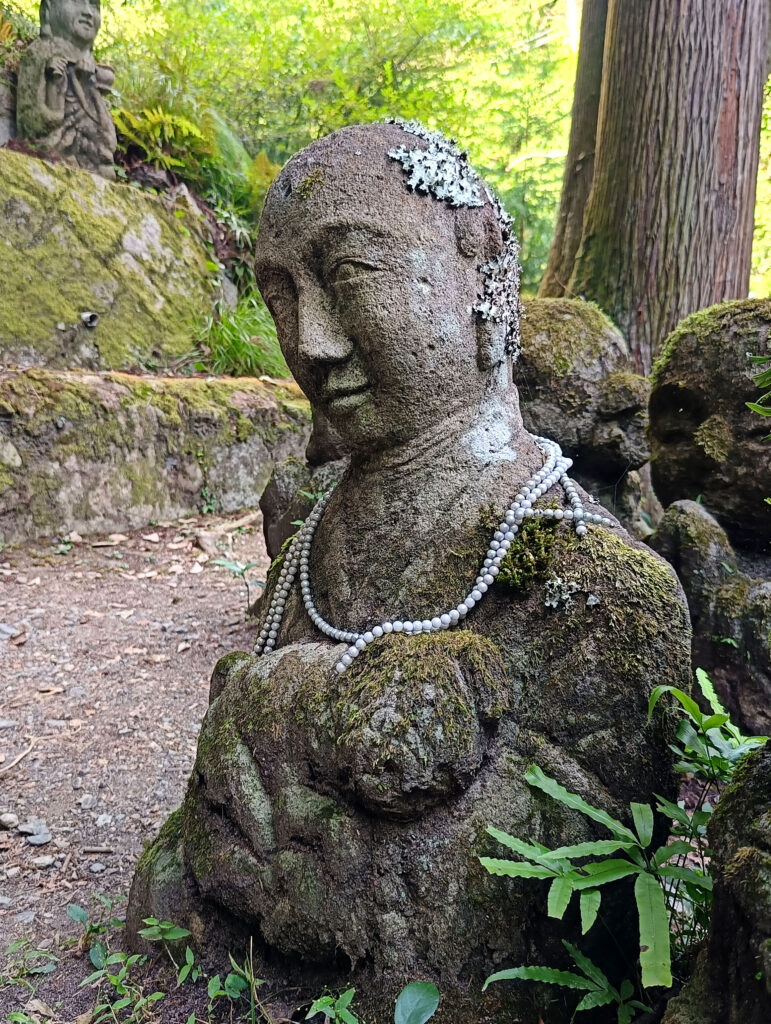
The story of Otagi Temple
The roots of Otagi Temple, initially named, trace back to the year 766, when Emperor Shotoku established it along the banks of the Kamo River, in close proximity to the renowned Gion district.
However, during the early Heian era (794-1185), the temple fell victim to a devastating flood from the Kamo River, leading to its destruction. Yet, a glimmer of hope emerged as Senkan Naigu, a priest from the esoteric Tendai sect of Buddhism, reconstructed it as an annex to the Enryaku-ji temple near Mount Hiei, northwest of Kyoto.
In gratitude, the locals installed a statue known as Yaku-yoke Senju Kannon (the thousand-armed Bodhisattva Kannon offering protection against misfortune), crafted by Senkan Naigu himself, in the rejuvenated temple.
Throughout the centuries, Otagi Temple confronted various natural challenges, enduring typhoons and subsequent floods. In the 13th century, amid the turbulent civil wars, Otagi Temple succumbed to destruction, reduced to rubble.
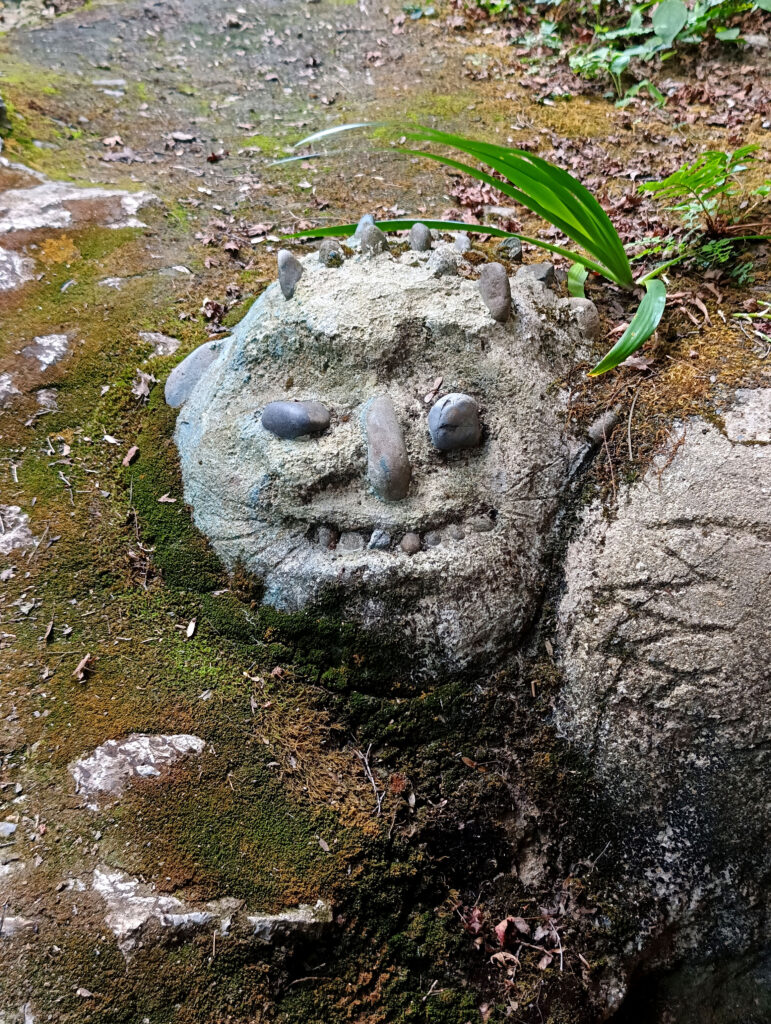
Relocation of Otagi temple
However, to safeguard the main hall and entrance gate, Otagi Temple underwent a relocation to its current site in northern Arashiyama in 1922. Unfortunately, this move didn’t shield it from substantial damage inflicted by a powerful typhoon in 1950.
Yet, the story of Otagi Temple extends beyond these challenges. In 1955, Kocho Nishimura, a sculptor and Buddhist statue restorer who later embraced the life of a Buddhist monk, assumed control of Otagi Temple, initiating a remarkable artistic metamorphosis.

The concept of crafting the rakan statues emerged in the 1980s as a means to generate funds for the temple’s restoration and engage the community. Nishimura extended invitations to individuals from across Japan, encouraging their participation in sculpture workshops.
These workshops provided an opportunity for people, regardless of their expertise, to unleash their creativity by crafting unique pieces of art from blocks of volcanic stone. The participants were free to express themselves, resulting in the creation of hundreds of statues adorned with diverse details and accessories, ranging from hats, glasses, musical instruments, animals, to even manga characters.

The outcome is an extraordinary and delightful collection, seamlessly blending Buddhist tradition with popular creativity. Otagi Nenbutsu-ji temple stands as a magical and charming space, inviting visitors to revel in the natural beauty and artistic diversity that abounds. It’s a destination that truly captivates, leaving an indelible impression.
Presently, the artistic legacy of the temple is upheld by the Nishimura family. Both Nishimura’s son and grandson, who are Buddhist priests and accomplished artists, continue to nurture the temple’s artistic vision. Together, they explore innovative avenues to convey the Buddha’s message of happiness through mediums such as music, photography, and other art forms.
The current Otagi Nenbutsu-ji temple
The entrance gate to Otagi Nenbutsu-ji temple, dating back to the Kamakura period (1192-1333), is flanked by two Nio statues, typical figures often positioned at the entrances of Japanese temples.

Beyond the gate, you’ll encounter the temple shop and a set of stairs ascending the mountain, adorned with numerous rakan statues. Upon reaching the upper level, the key features of the complex unfold: the main hall and two petite pavilions—the Jizo Hall, dedicated to the protector against fire, and the Fureai Kannon Hall, where visitors can physically connect with the statue of the goddess of mercy.
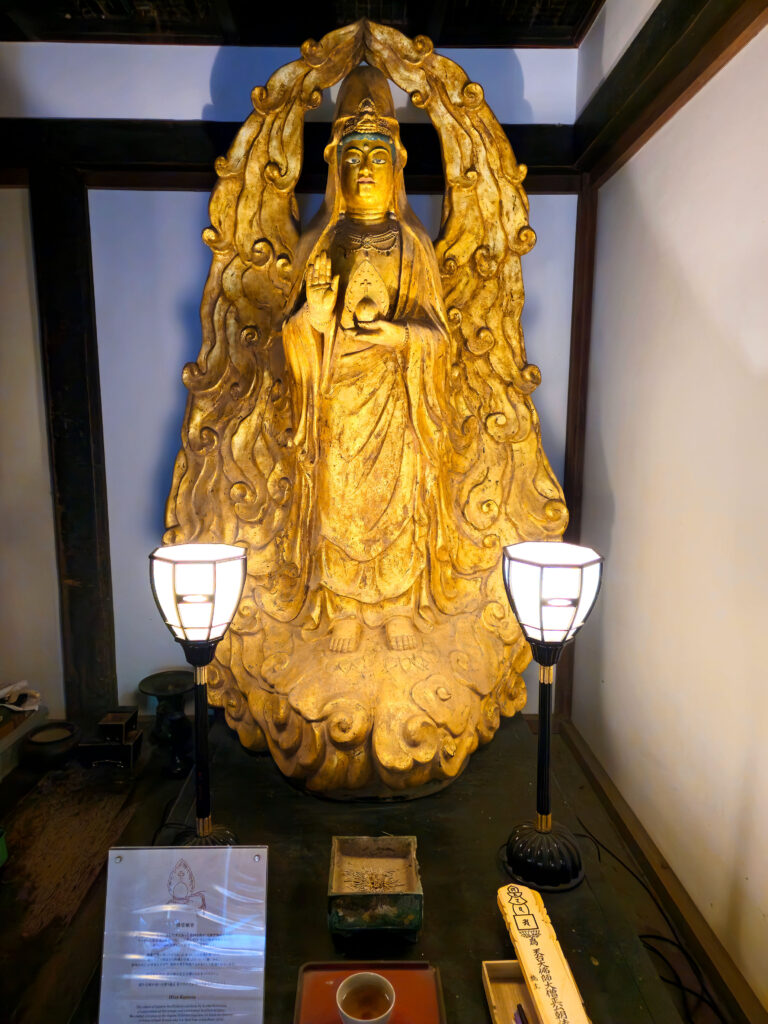
Apart from these notable attractions, you can marvel at the striking golden sculpture of Kokuzo Bosatsu, the deity associated with prosperity, study, and business. Additionally, there’s the Sambo-no-Kane, a set of three treasure bells, each bearing the words of Buddha, Dharma, and Sangha. When rung in succession, they produce a harmonious melody, serving as a prayer to Buddha, believed to comprehend the desires within your heart.

You’ll also come across the Tahoto pagoda, a two-story structure, situated next to the depiction of the renowned Buddhist monk Saicho, alternatively known as Dengyo Daishi following his demise.
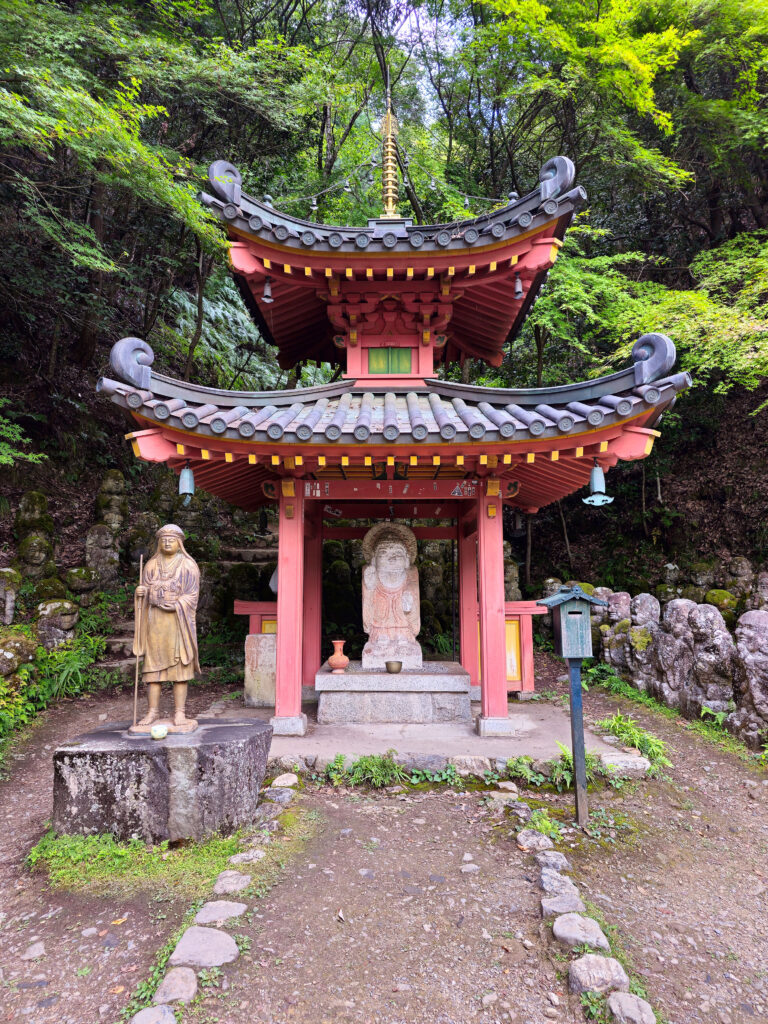
1200 rakan statues
Without a doubt, what leaves a lasting impression on visitors at Otagi Nenbutsu-ji temple are the remarkable 1,200 rakan statues, also referred to as the disciples of the Buddha (also known as arhat).

What’s intriguing is that each rakan displays a unique expression and is involved in various activities. Some play tennis or practice boxing, while others engage in playing musical instruments like guitars and saxophones. Some wear glasses, while others simply enjoy a good sake. It’s truly enjoyable to observe the distinctiveness of each one, as no two are alike. In fact, it’s a tradition to search for the rakan that most closely resembles oneself.
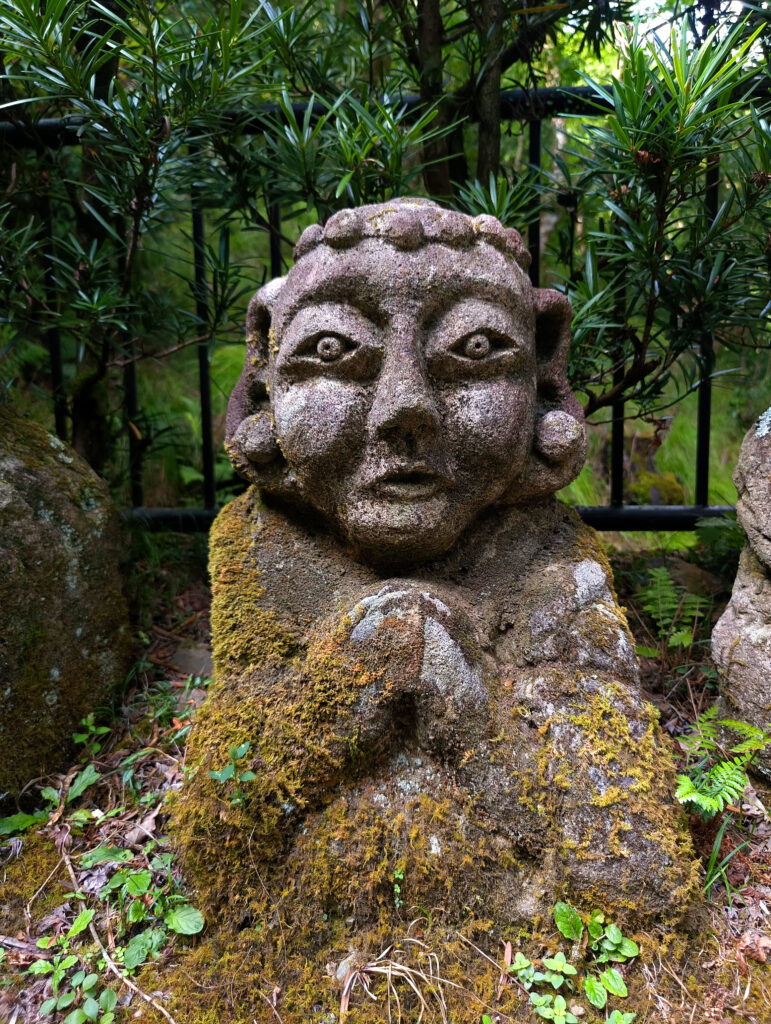
Moreover, numerous statues are entirely covered with moss, imparting a mystical touch to the features of the figures and the overall ambiance of the entire area.
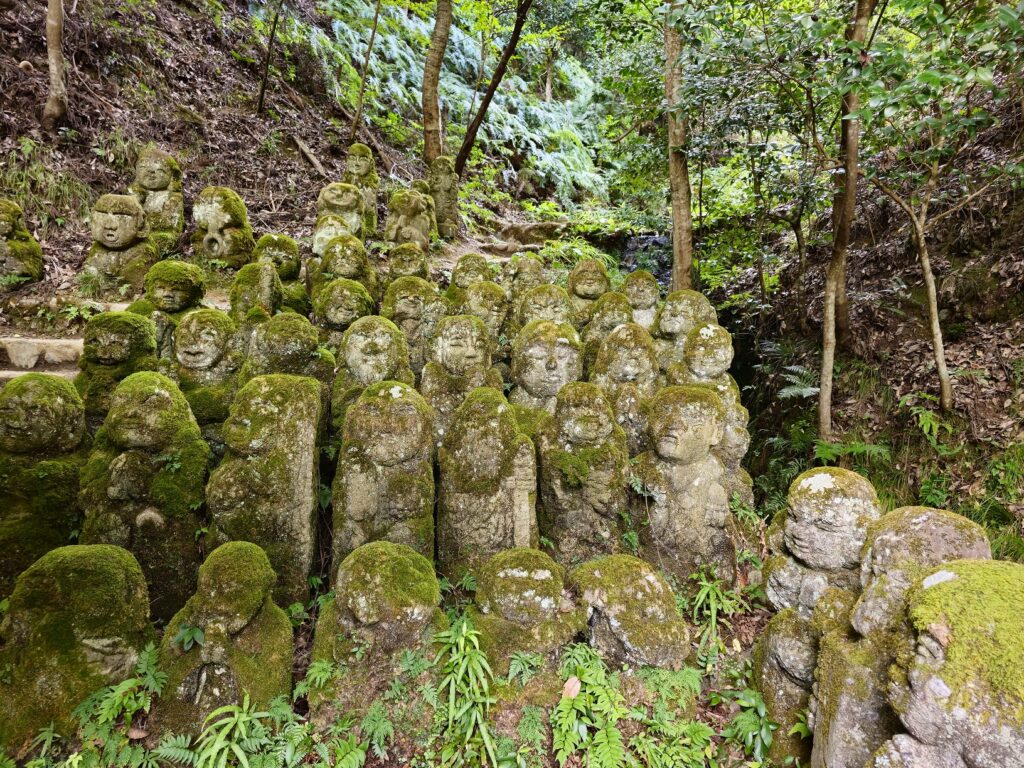
These amusing expressions sharply contrast with the traditional representations of Buddhas seen in Japan and Southeast Asia. You can make this comparison by visiting places like Sanjusangen-do temple, where hundreds of Buddhas are depicted in a conventional manner.

The Ojizo-san, while similar, are distinct. These protective deities are present in various parts of Japan, including this temple, serving a protective role for all living beings. In contrast to the intricate rakan statues, Ojizo-san figures are much simpler, carved directly into the rock, and typically adorned with a distinguishing red garment.
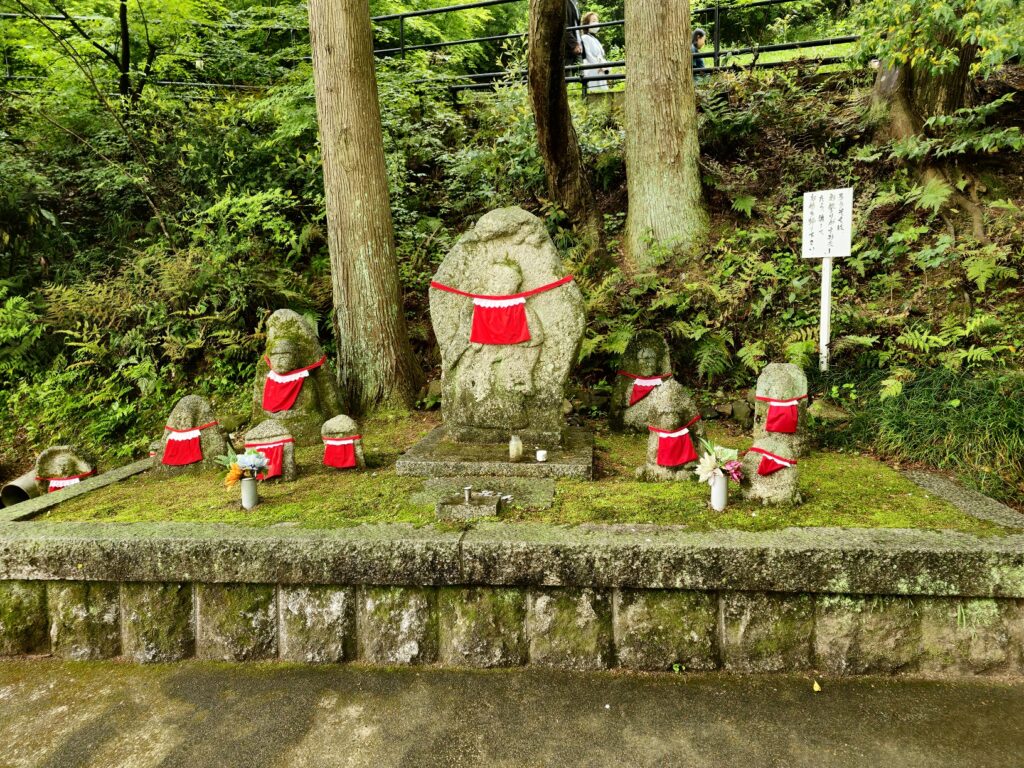
How to get to Otagi Nenbutsu-ji temple
Otagi Nenbutsu-ji temple is situated in Oku-Sagano, approximately 3 km from Togetsu-kyo Bridge in the Arashiyama district.
Facing the temple, you’ll find a bus stop called “Otagidera-mae.” You can opt for any bus (62, 72, 92, or 94) heading in the Kiyotaki direction, which will drop you off at this stop. These buses follow the main street of Arashiyama, making them easy to locate. Keep in mind that schedules may be limited, potentially affecting your plans.
However, some tourists choose to cycle to the temple as there are several bicycle rental shops in Arashiyama. Two recommended stores, Railwayman Bicycle Rental and Ranbura Rental Bicycle, offer electric bikes—an excellent option for navigating the hilly terrain in the area.
If you prefer a leisurely walk, you can reach Otagi Nenbutsu-ji temple from downtown Arashiyama. The journey takes about 30 minutes and provides a delightful stroll through the historic district of Saga Toriimoto.
The temple welcomes visitors every day from 8:00 AM to 4:30 PM, and the entrance fee is 300 yen. To fully appreciate the experience, it’s recommended to allocate at least an hour for exploring the temple and enjoying the intricate statues.
Other attractions near Otagi Nenbutsu-ji
- Saga Toriimoto: A delightful historic preservation district featuring cobblestone streets and traditional Japanese houses.
- Adashino Nenbutsu-ji temple: A nearby temple renowned for its stone statues commemorating the deceased.
- Gio-ji temple: A small temple surrounded by lush vegetation and moss, creating a serene and mystical atmosphere.
- Daikaku-ji temple: An ancient temple with a landscaped lake and beautiful gardens, providing a haven of tranquility.
- Jojakko-ji temple: Positioned on a mountainside, this temple offers panoramic views of Kyoto and stunning gardens.
- Mount Atago: A sacred mountain and significant pilgrimage site in Kyoto, offering hiking trails and a shrine at its summit with breathtaking panoramic views.
- Sagano Romantic Train: Also known as the “Sagano Scenic Railway” or “Sagano Torokko,” this scenic train journey takes you through the beautiful landscapes of Arashiyama and the Hozugawa River, providing a unique and natural sightseeing experience.
- Hozugawa River Cruise: If you’ve enjoyed the Sagano sightseeing train, consider returning to downtown Arashiyama on a cruise along the Hozugawa River. This traditional boat ride offers a charming journey along the winding river, concluding near the iconic Togetsu-kyo Bridge. It’s a delightful way to cap off your adventure in this beautiful region.
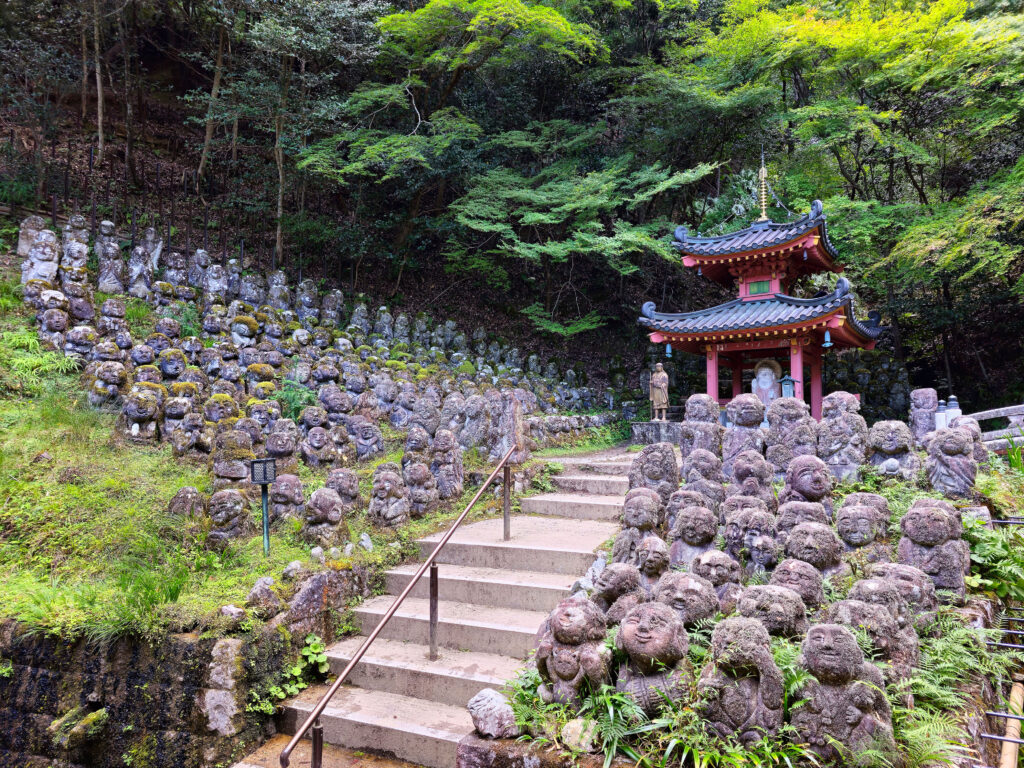
Otagi Nenbutsuji is a hidden gem, off the beaten path and less crowded, offering an ideal escape from the urban chaos. It provides a unique opportunity to immerse yourself in Japanese culture and nature. When you visit, be sure to find your favorite statue and capture a photo—it’s guaranteed to bring a smile to your face! 😄



